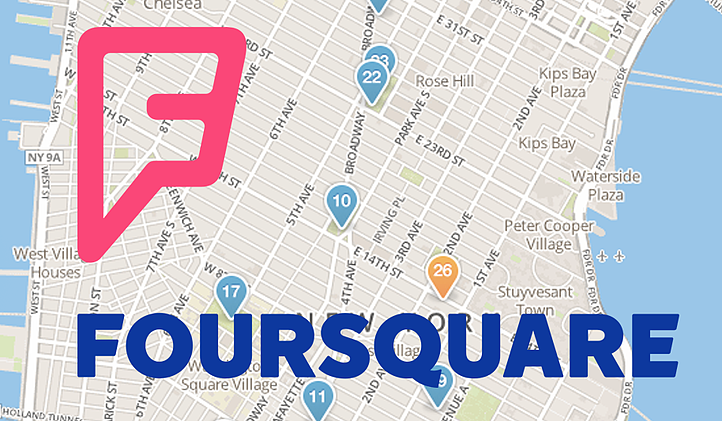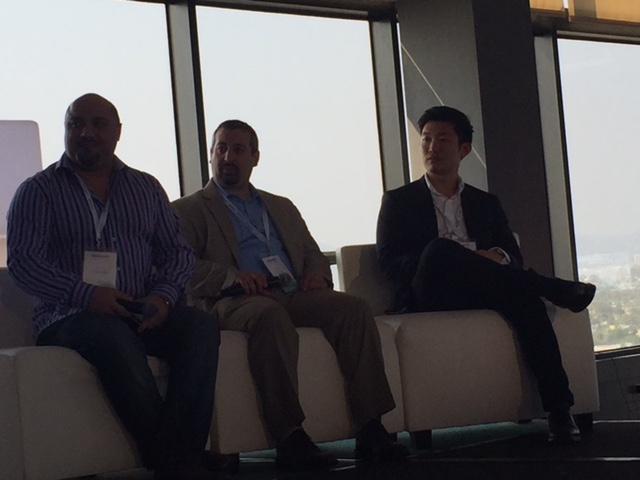Mila Hose | Aug 25, 2016 4:21:19 PM
3 Min Read

Location data is extremely valuable when it comes to understanding local customers and creating strategies for engaging them and providing relevant, valuable advertisements to draw them in. Mobility has changed the way that marketers can understand and interact with digital audiences, and it has given a whole new meaning to online-to-offline attribution. Using a smartphone’s GPS data to geographically target audiences has become critical to the success of creating local customer profiles and targeting local prospects with relevant and value-based ads. Today, Foursquare's Mark Kwak talks about how brands can better understand their audiences by maximizing the power of location data with Reza Qorbani of Qualia/BlueCava and Alex Levin of Circulate, moderated by Greg Sterling of the Local Search Association.
Understanding Location Data
Understanding location is a central part of user experience. In fact, “location impacts every aspect of business,” says Kwak. Location data enables brands to connect with consumers on a contextual basis that is not locked to the user’s immediate geographical location. Location-based advertising focuses on understanding a prospect or customer based on a the location history of a specific mobile device as opposed to proximity advertising, which simply aims to target anyone within a specific geo-location. This is a much more personal, and value-driven approach that can be used as a relationship-building mechanism.
Local User Behavior
User location data is intricately tied to accurate and consistent local brand data. In order to gain a comprehensive profile based on a user’s location data, business listings and local landing pages must be accurate. Not only is it important to have accurate business data and local listings to provide ease and accessibility to the user, but also so that brands can gain an understanding on that user’s local visits. If a user ends up in one location only to realize that they received an inaccurate business listing, then a brand will also end up with inaccurate data about that user’s location preferences and geographic habits. 
Places Data
Places data is different from location data in that provides a holistic understanding of a user’s daily habits rather than a simple lat-long reference. In order to target users with relevant ads and offers, brands must first understand what type of places a user frequents. “Location data allows brands to understand user behavior, and then segment the data accordingly,” Kwak explained. It is impossible to create accurate audience profiles without first knowing which places a user is likely to visit and purchase from. As businesses close, open and relocate, it is important to understand where customers get their location data to make sure your brand can be found on relevant platforms.
Purchase Data
Purchase data is a great way to gain a holistic understanding of consumer audiences. Data aggregators can provide purchase data from users through mobile devices based on location history, which gives brands a powerful tool to create audience-targeted ad campaigns. Brandify’s list of data aggregation partners push your brand’s location data to the most relevant platforms, giving your brand more visibility and growing your audience base.
Location Data Accuracy
One of the most important components of location-based audience profiles is clean, accurate and consistent location data. Not only does accurate and consistent location data stand as a trust-building mechanism between brands and customers, it allows customers to easily navigate the sea of local businesses and seamlessly connect with your brand’s local store. In turn, your brand can begin to build accurate audience profiles based on location data and places data, and grow in-store conversions.
Ultimately, location data allows you to give your customers a more personal experience. Marketers can utilize first-party insights that inform powerful audience segments and provide a unique experience for each group based on their user history and geographical preferences. Customers do not want to be treated like one in the crowd; personalization is the key to retaining your customers and creating avid fans.
Topics: Analytics, Location Intelligence, Mobile
Content writer @ Brandify.
Offer Post Justifications Spotted in Local Results
Oct 4, 2021 8:47:46 AM
Monday Memo: More than Brands and Influencers, Consumers Trust Each Other
Sep 27, 2021 7:56:34 AM
Monday Memo: Google Adds “Latino-Owned” to GMB Identity Attributes
Sep 20, 2021 7:58:58 AM
Monday Memo: New Study Shows 94% of Consumers Use Online Business Directories
Sep 13, 2021 7:16:55 AM
Monday Memo: The Page Experience Update Has Fully Rolled Out
Sep 6, 2021 7:43:45 AM